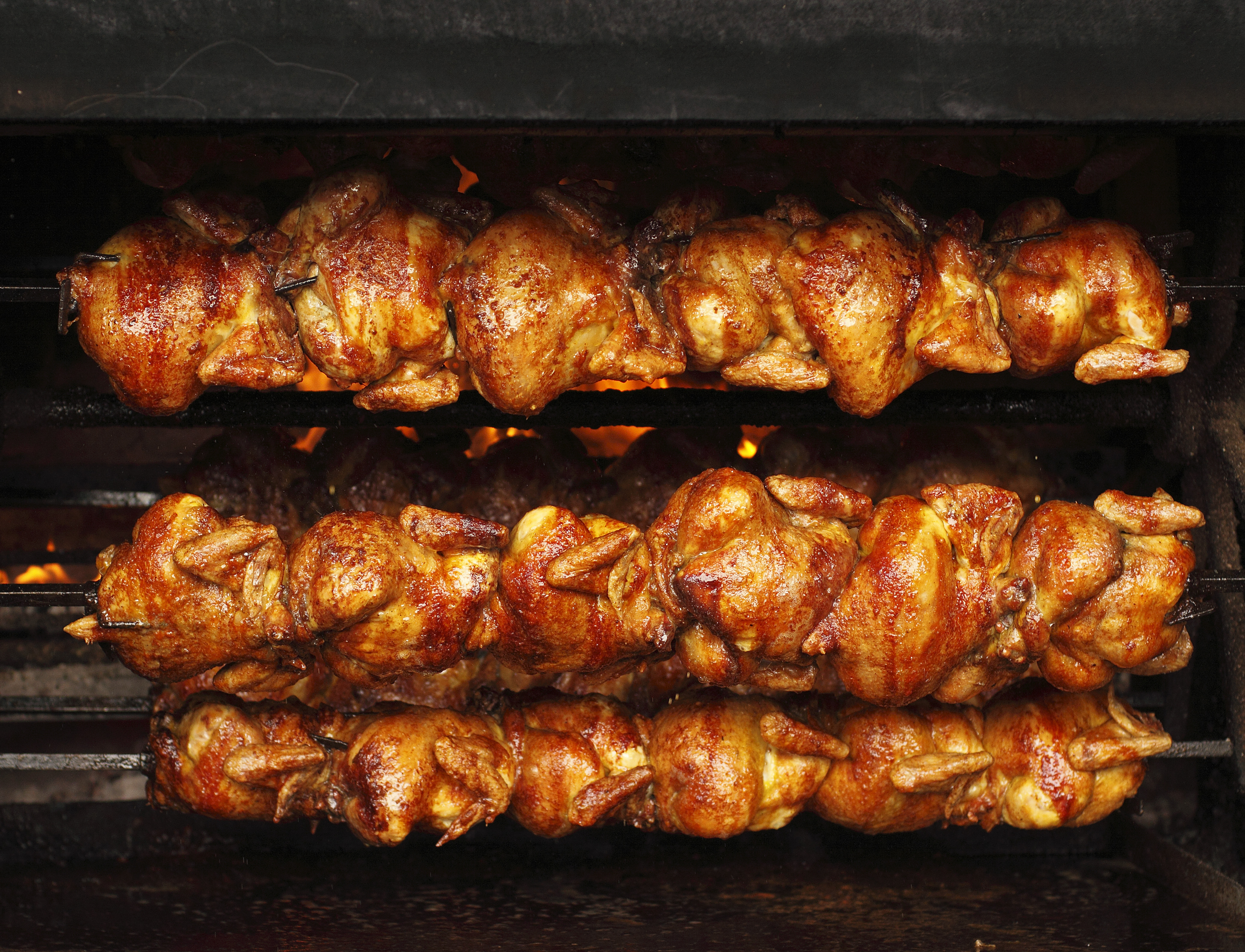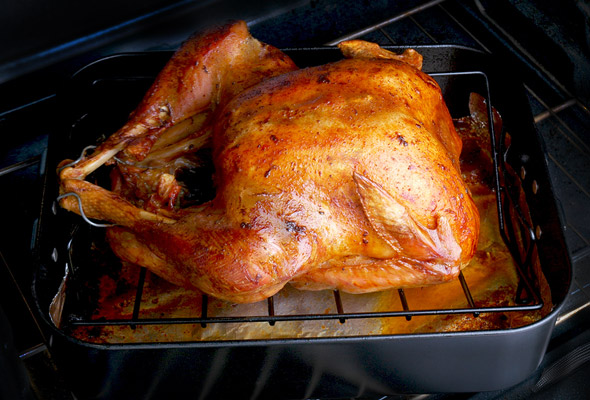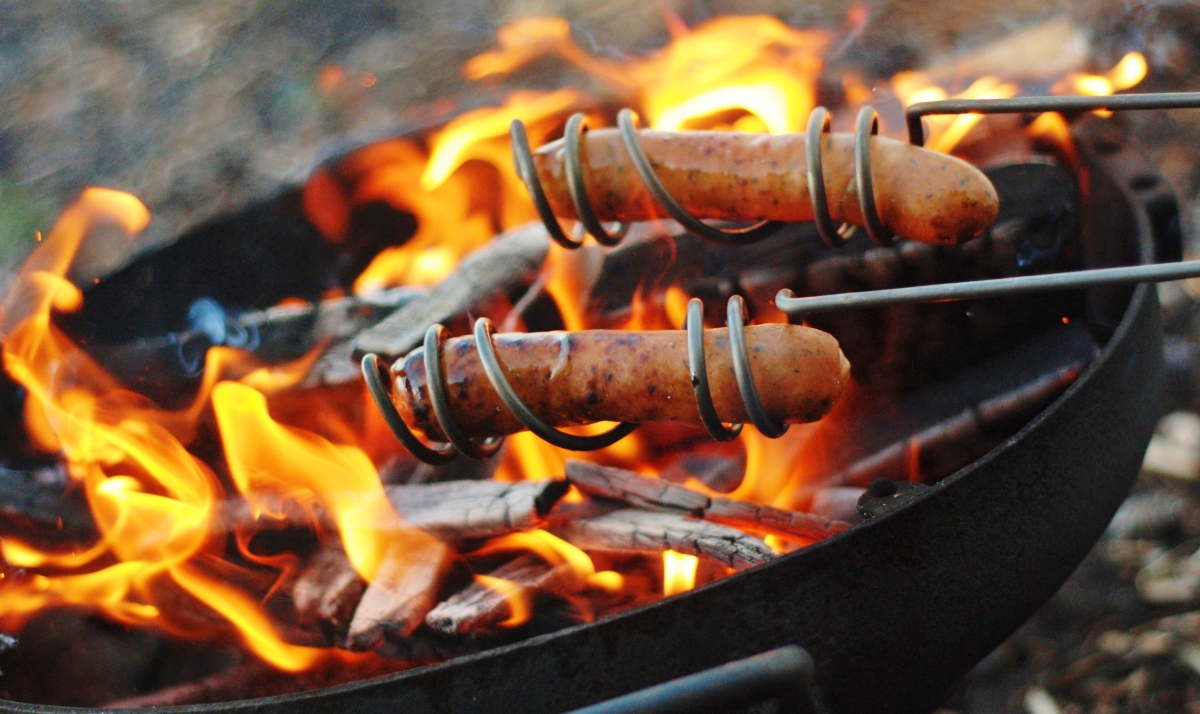Roasting
Dry roast is cooking over high heat. This resulting from the Maillard reaction on the surface of the material for frying compounds of proteins, fats and sugars which are responsible for the tanning and the typical taste. When roasting vegetables with low protein content the Maillard reaction plays only a minor role, browning and flavor arise there mainly through caramelization.
The roast is probably the oldest cooking technique, because it does not necessarily require vessels, but only the control of fire.
Under frying grilling, roasting in the oven and the open pan frying are in common usage (also called sauteing ) summarized. However, there is an essential difference between grilling and roasting in the oven on the one hand, in which the thermal radiation plays the main role, and frying in the pan on the other hand, based on heat conduction. If added after searing liquid, it is called braising.
Roasting meat
When roasting meat must be ensured by appropriate choice of temperature and duration that the forming crust is fragrant, but not too dark. At the same time the interior must reach a temperature at which the collagen of the connective tissue that makes meat tough, can be converted to gelatin, but the muscle protein coagulates not so far that it gives off all the water and the meat will be tough and dry.
The formation of aromatic crust is at about 150 to 200 ° C instead of the conversion of collagen and muscle protein at about 70 ° C. A roasted piece is thus at the latest even if formed a brown crust and the core temperature has reached 70 ° C. At the outset of delicate, short fiber pieces of meat the optimal core temperature is significantly lower, with solid, long fiber, it must be maintained for much longer, which is why they should not be fried, but stewed or boiled.
In order to keep the food to dry on the outside, so that rapidly forms a crust and its interior remains juicy, it should only be salted at the end of the frying process. In initial salts diffused through osmosis water from the inside out, which is contrary to both destinations.
For a similar reason, the fried food should be suspended from the outset the right temperature. At too low initial temperature, the cooking time is prolonged, leading to greater dehydration. This has nothing to do with the often mentioned " close the pores" - those established by Justus von Liebig hypothesis is now discredited because muscles have no pores.
Larger pieces should rest after frying something, ie at much kept warm under 70 ° C in order to distribute the meat juices from the inside out and there can be a balance between surface temperature and heart.
Another Garvariante is the low-temperature method. Here, the meat is first sautéed in the pan to prevent the formation roasting substances, and then cooked at a temperature of about 70 to 80 ° C in the oven for much longer time than usual. The advantage is that appropriate cuts of meat remain tender in the oven for hours.
Etymology
Fry the verb belongs to the group of words from Indo-European barm bher [e ] " swell, well up, boil 'for. It's brew with, porridge and other expressions that have to do with the heating or fermenting foods used. Not related, it is with the origin of the piece of meat frying, which is derived from the Old High German brato for " sheer flesh, soft tissues ".










